
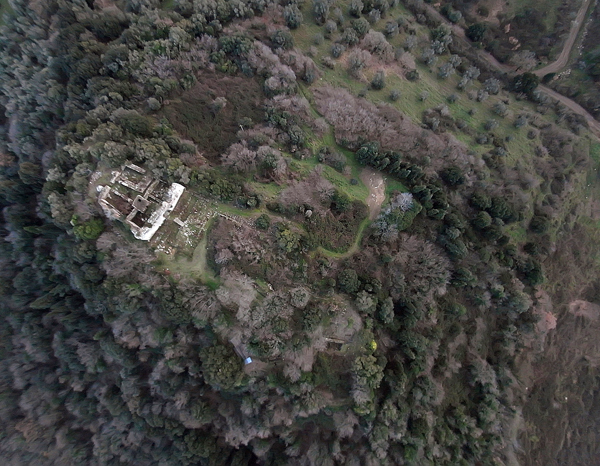

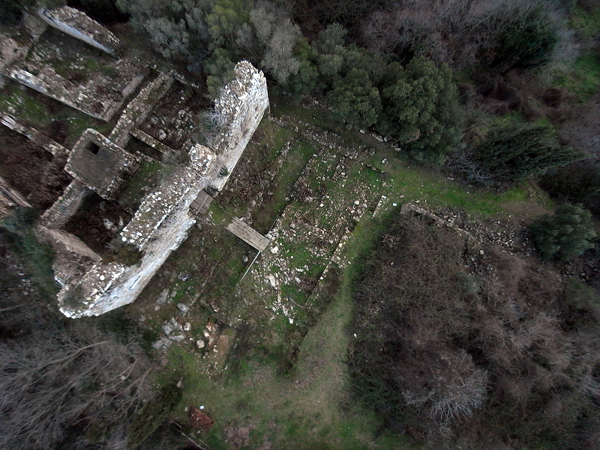
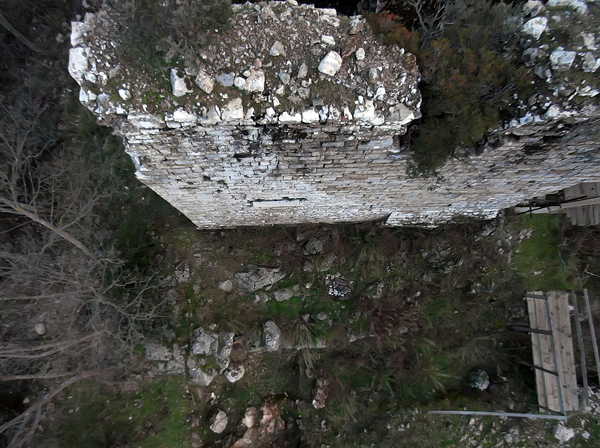
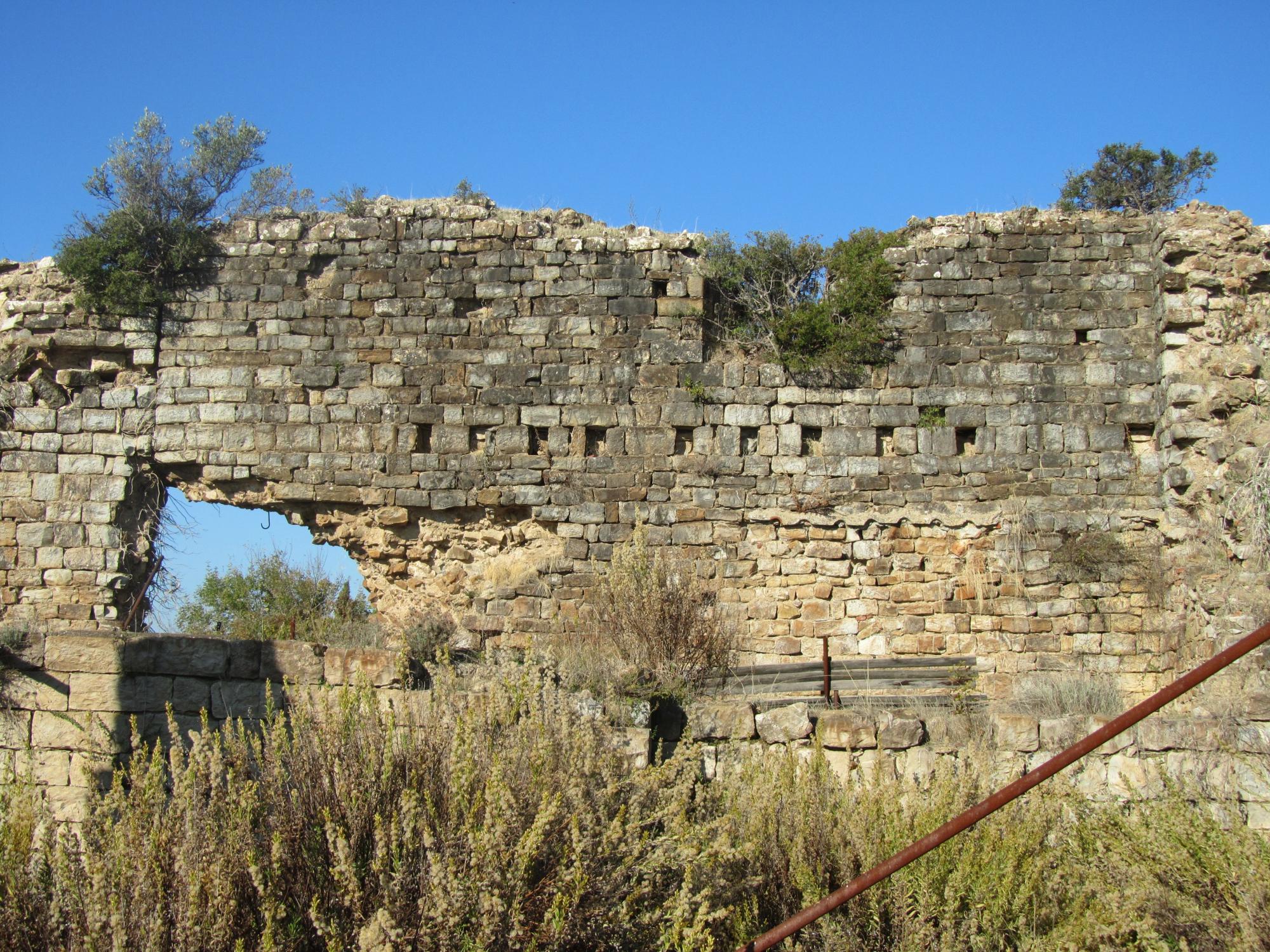

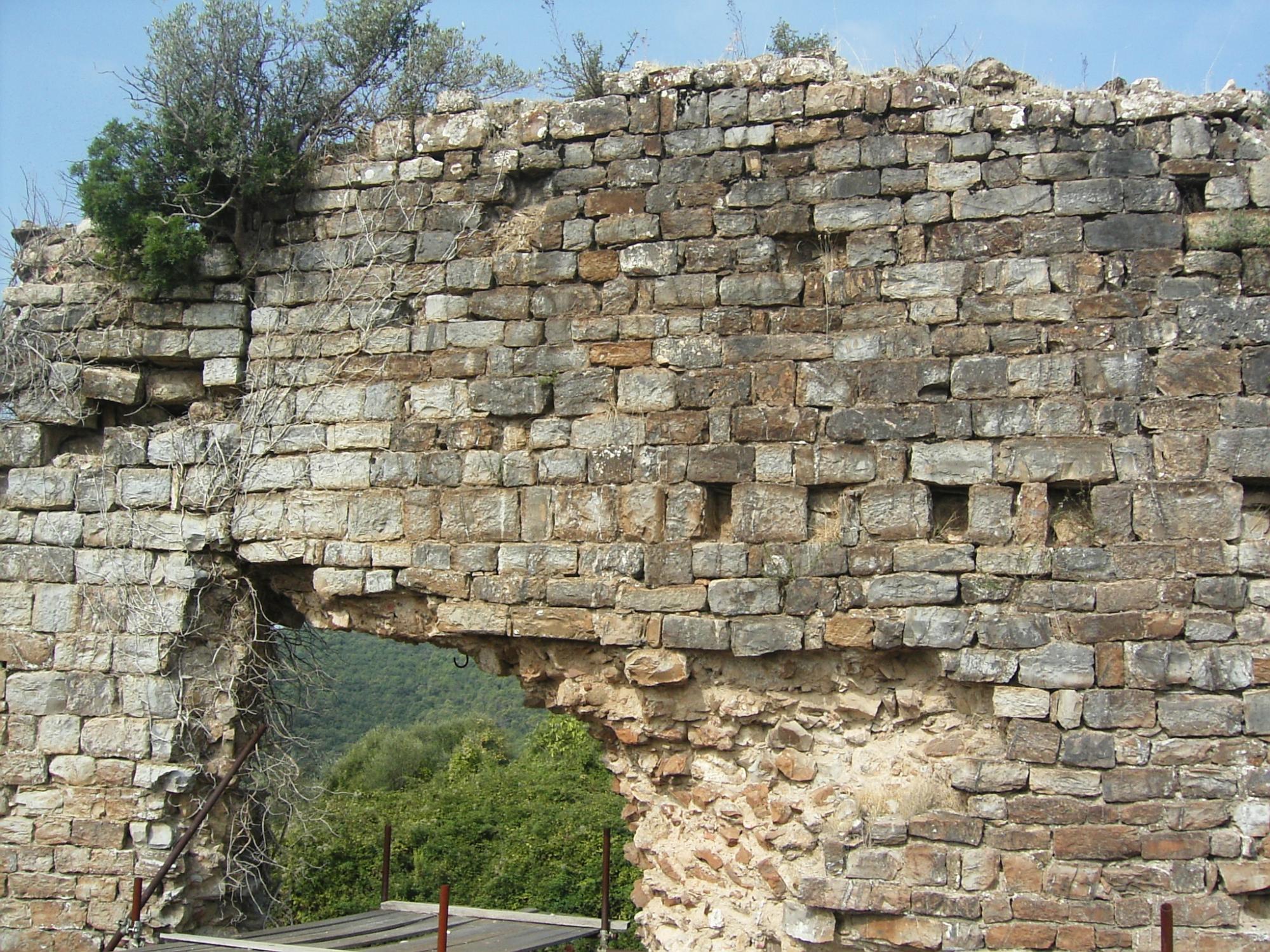

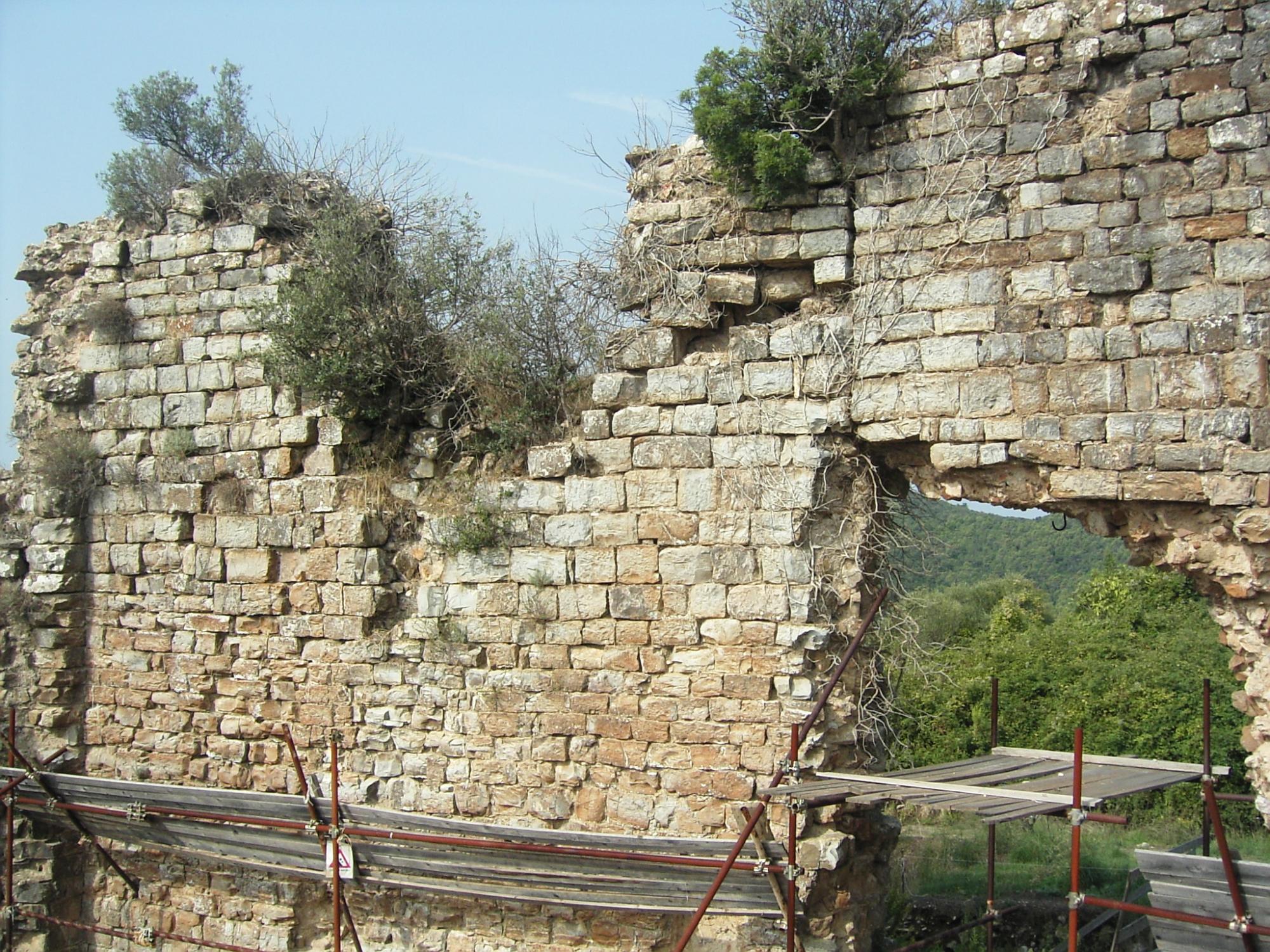
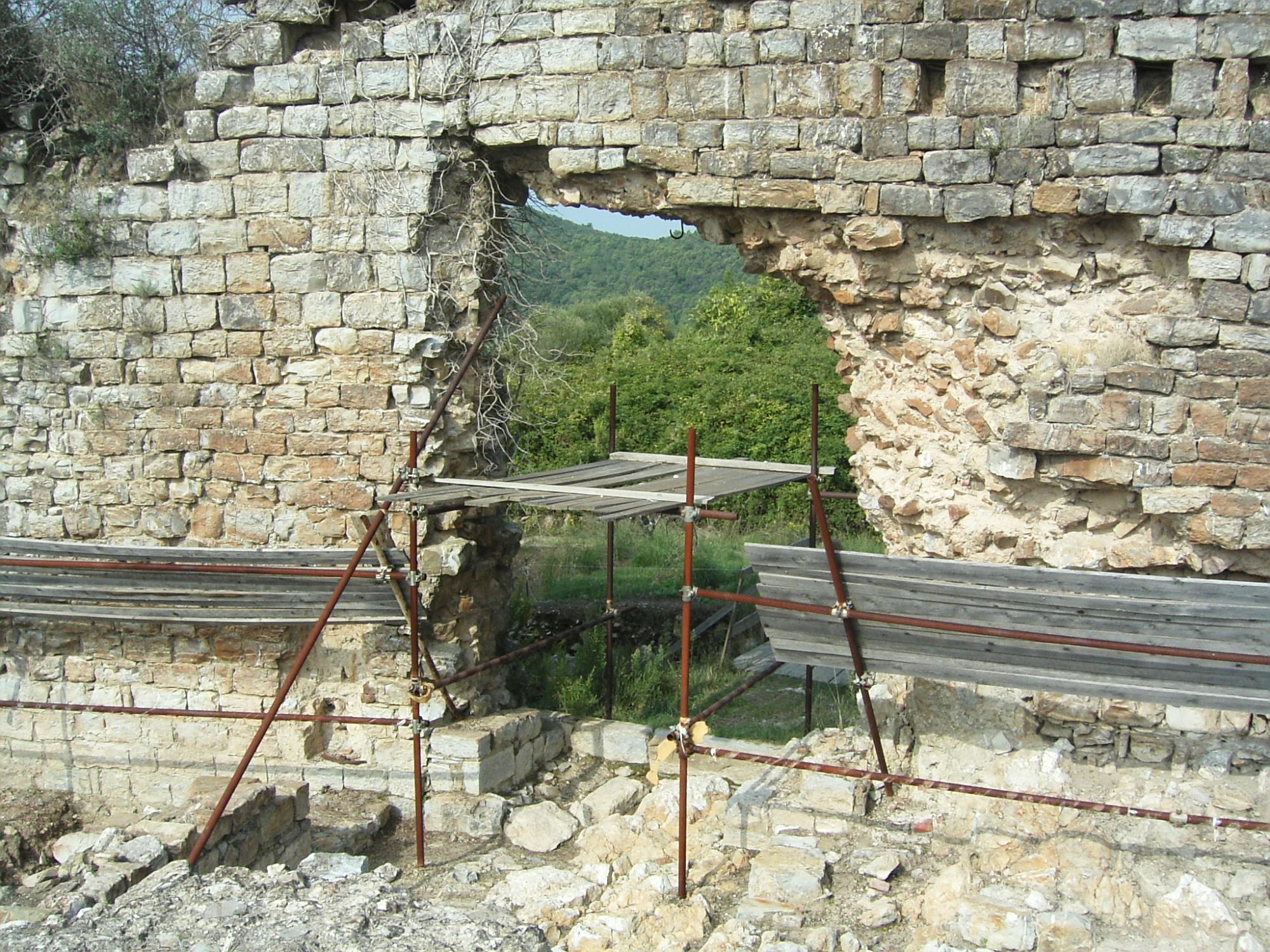
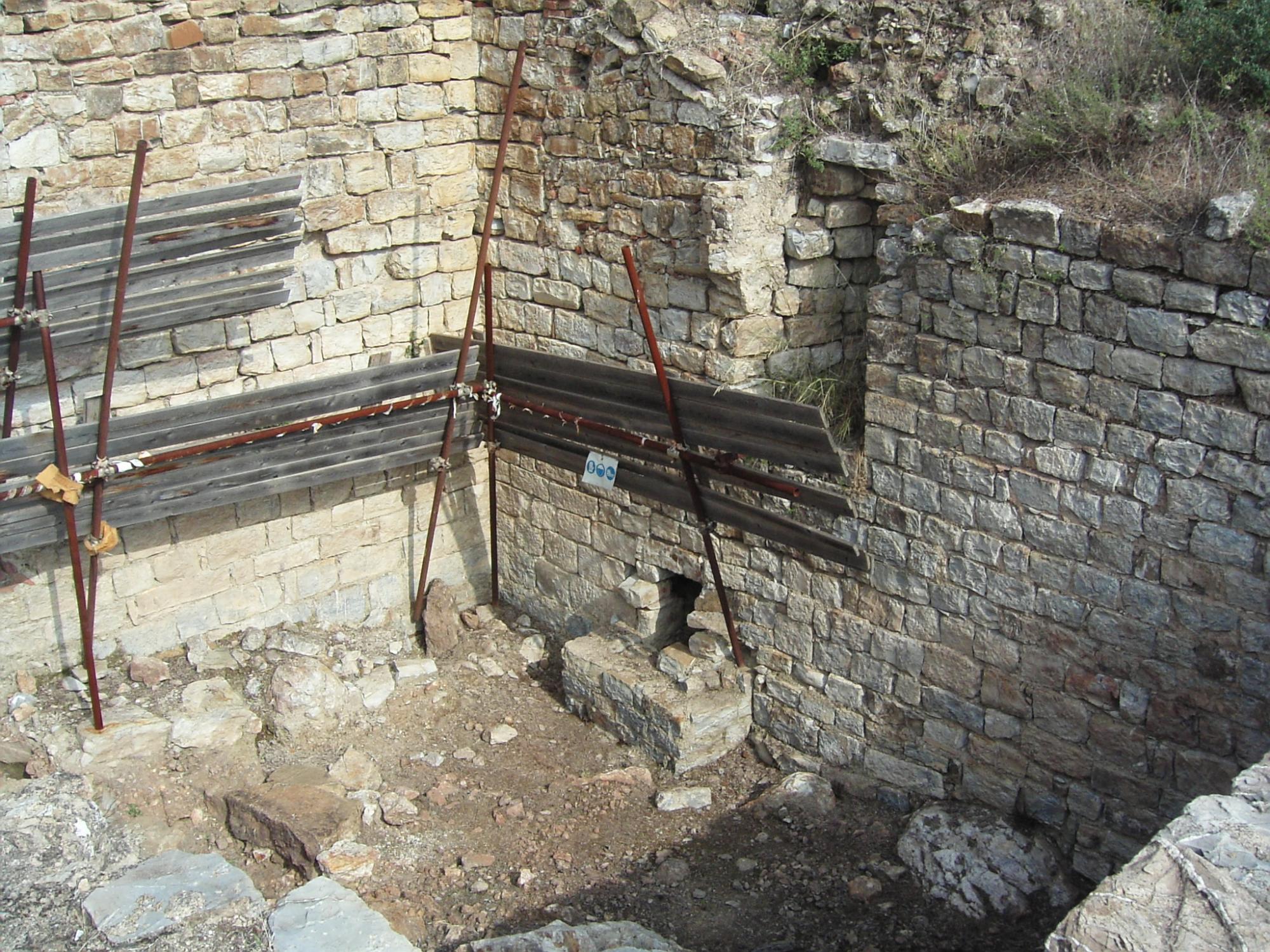
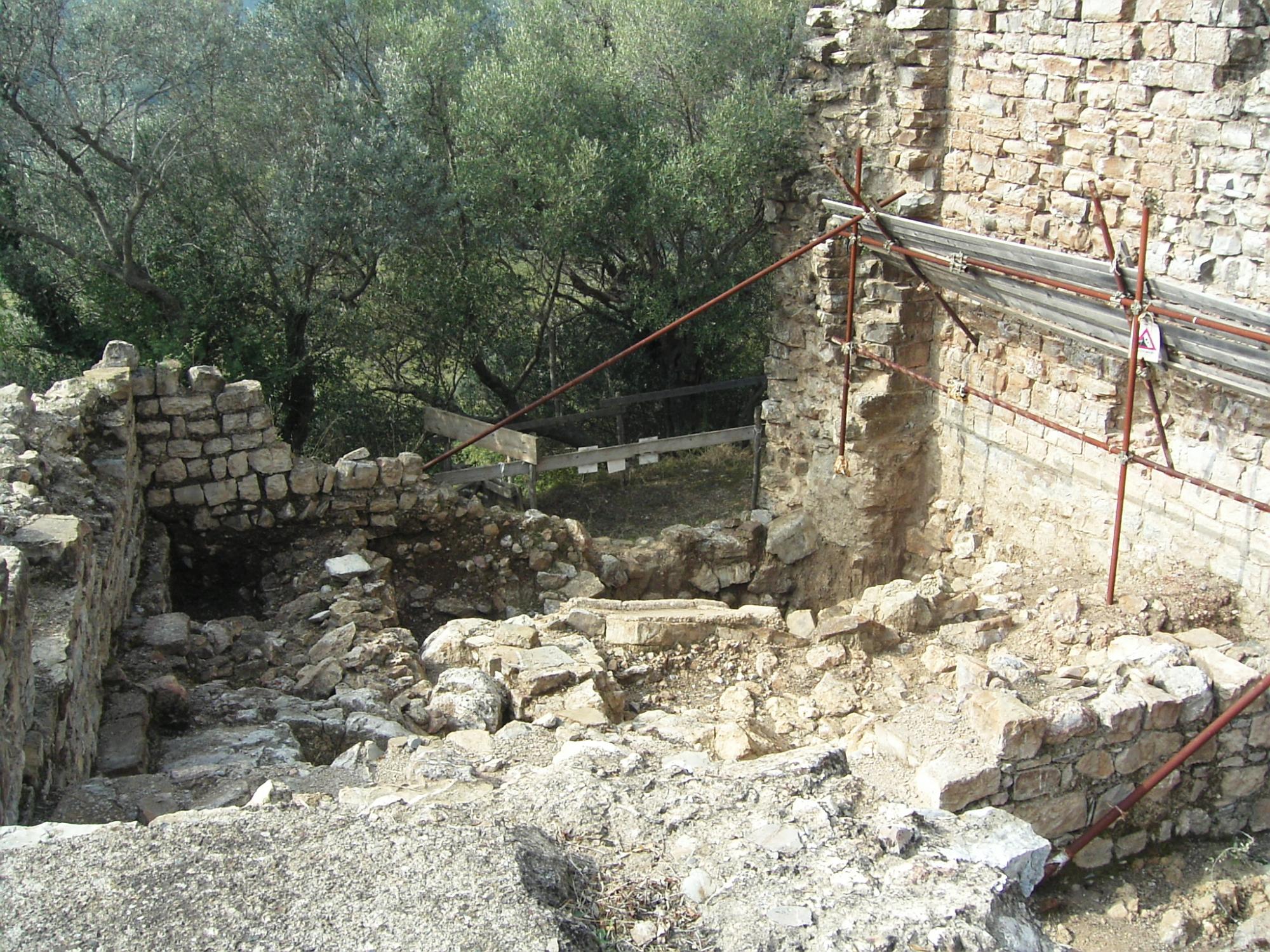
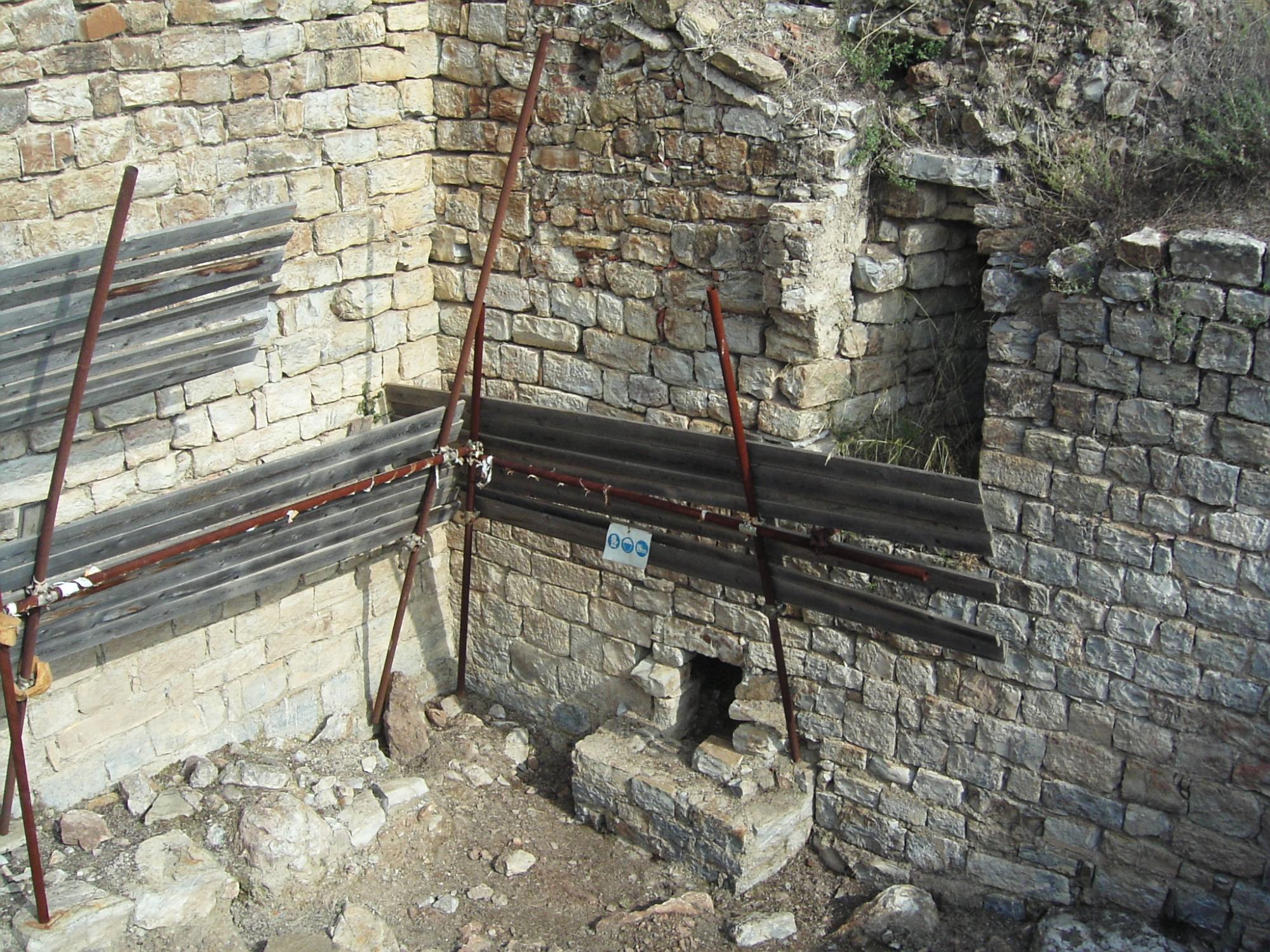
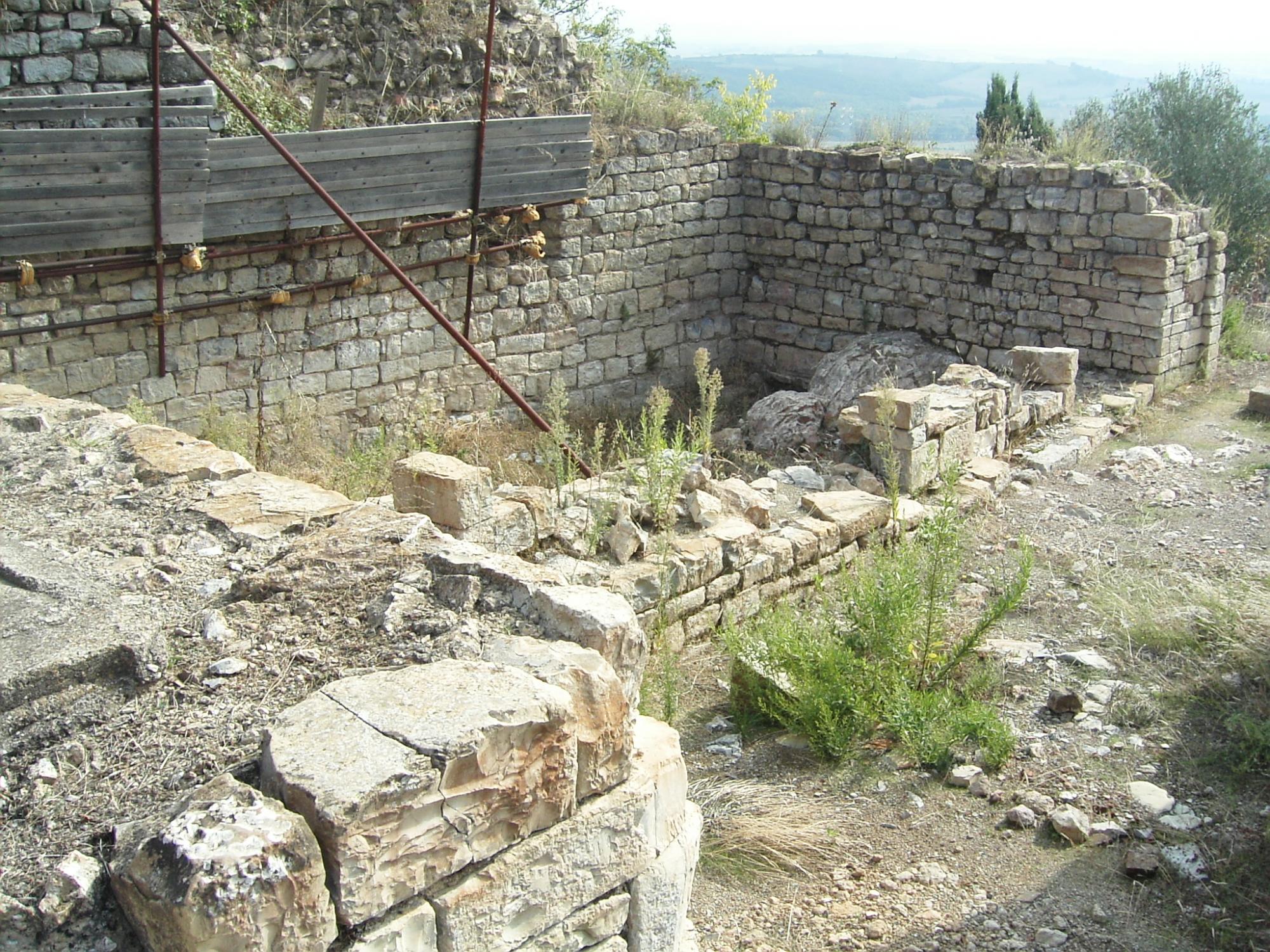
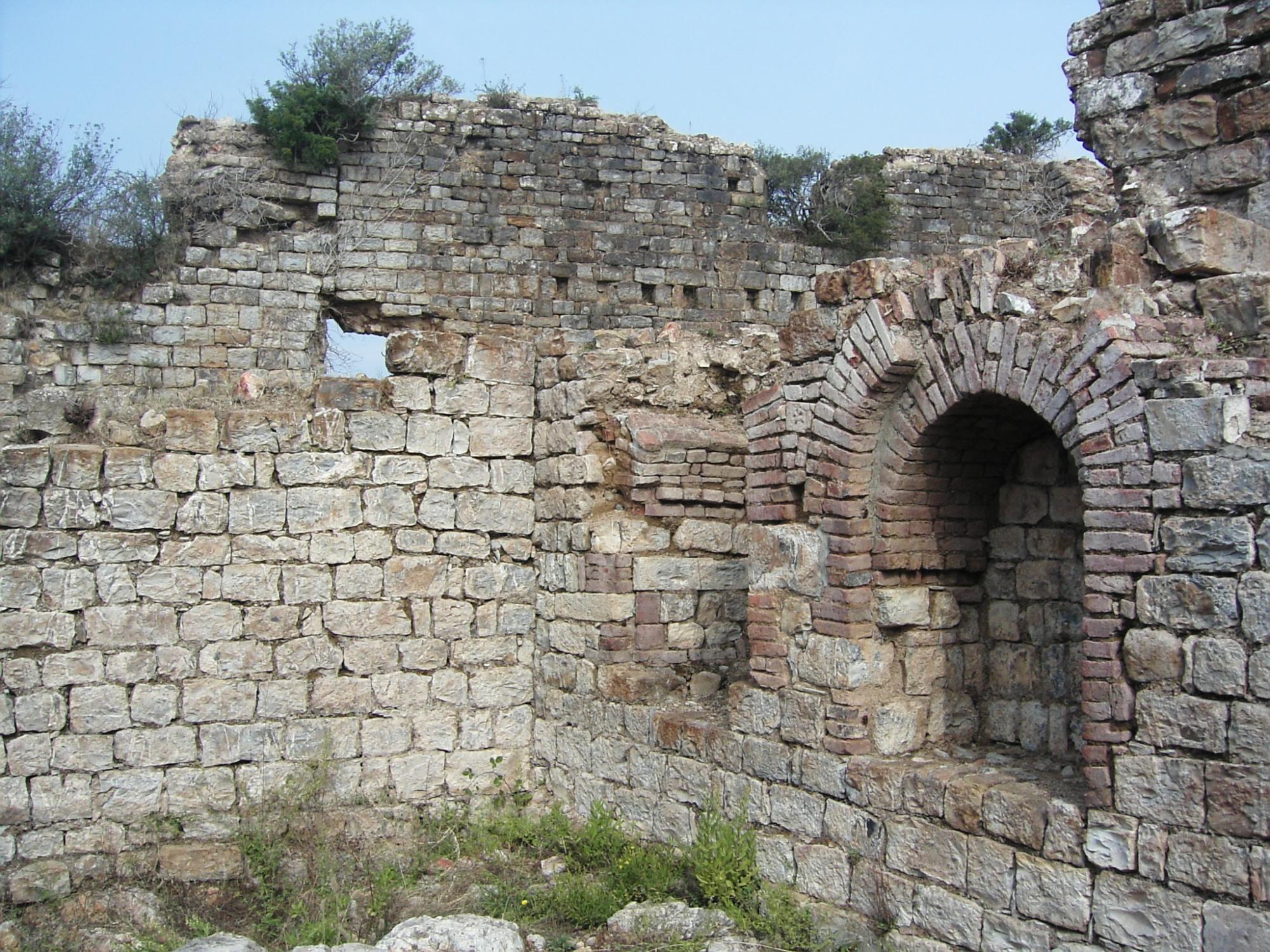
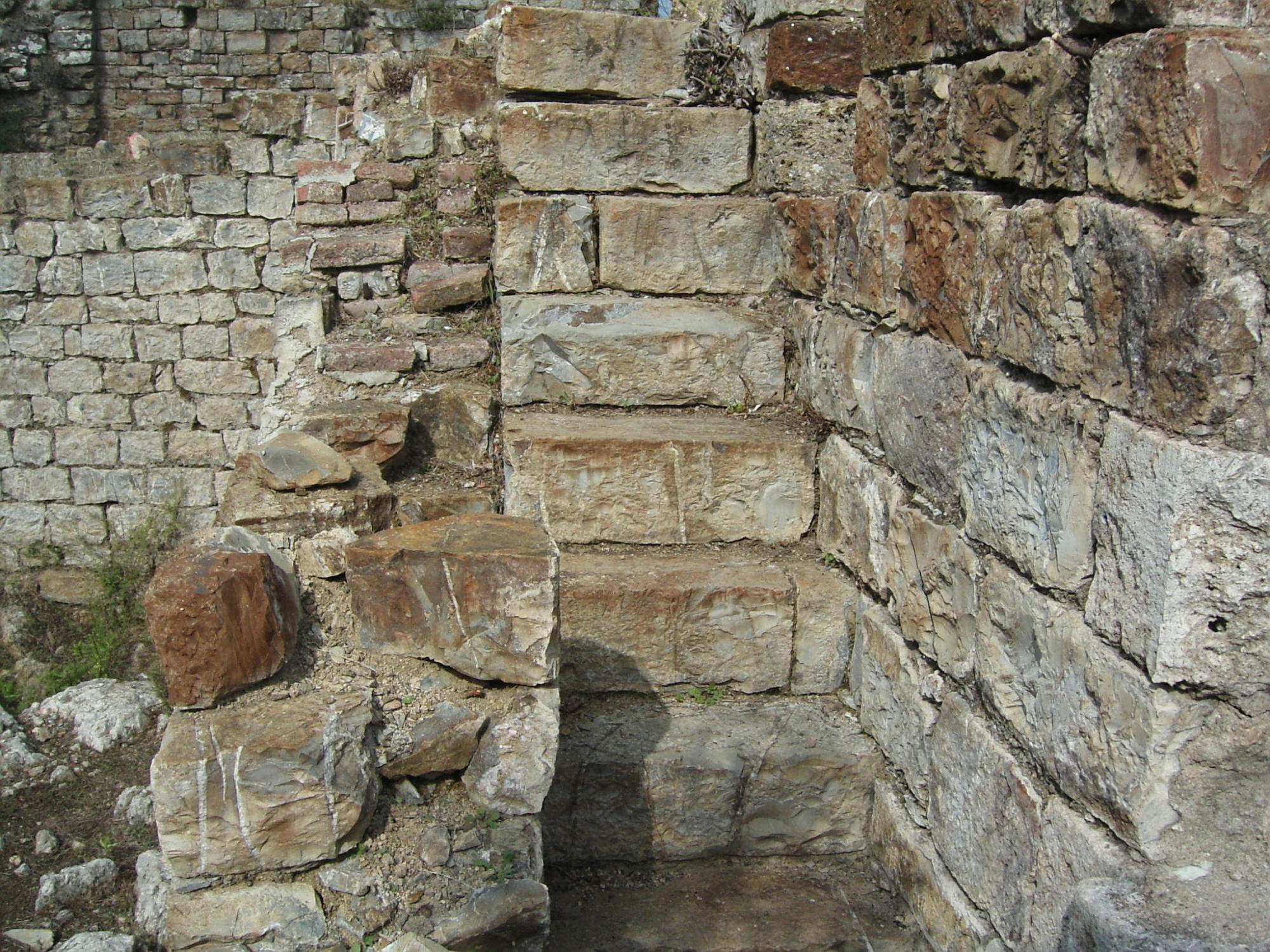

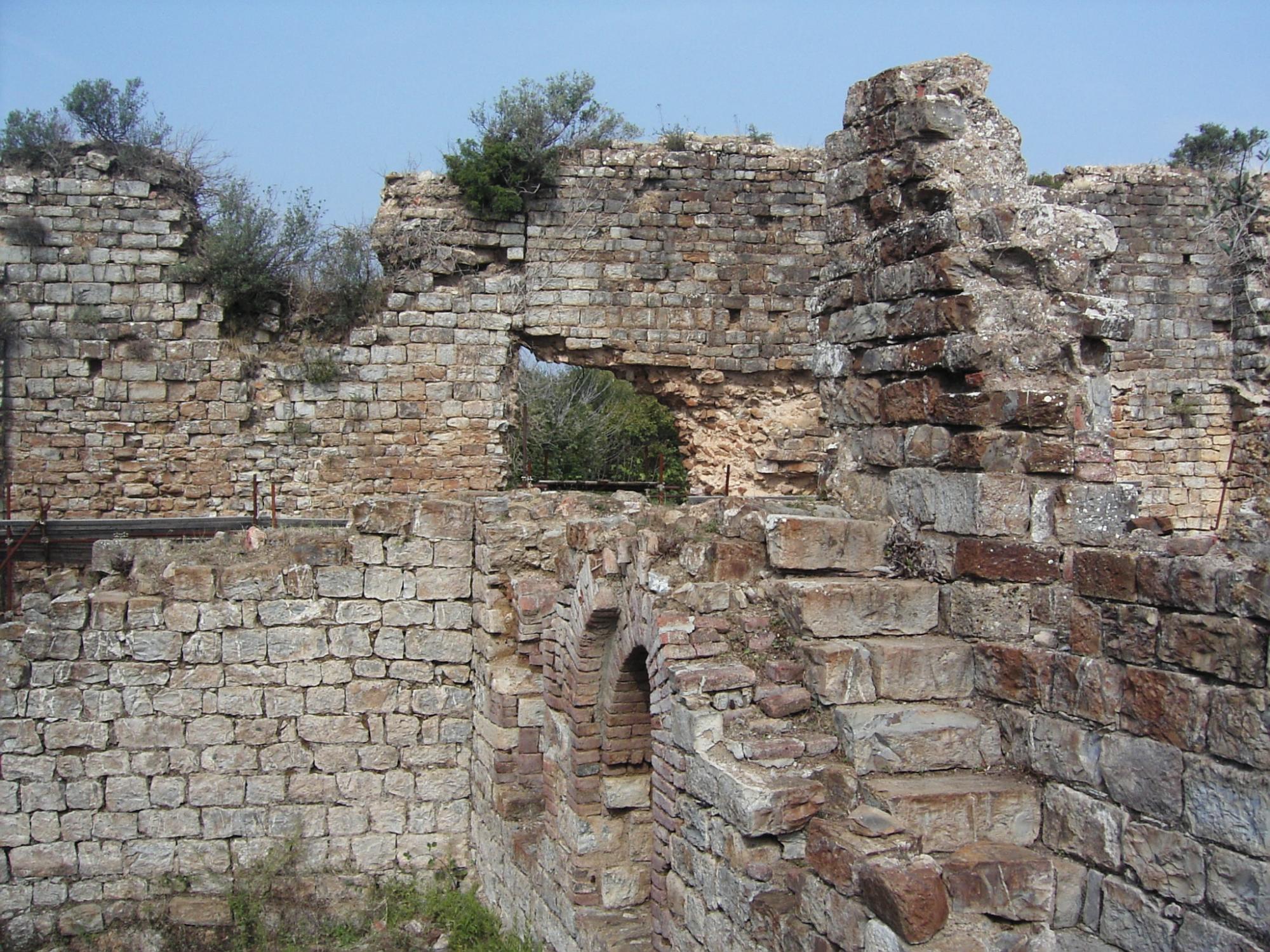
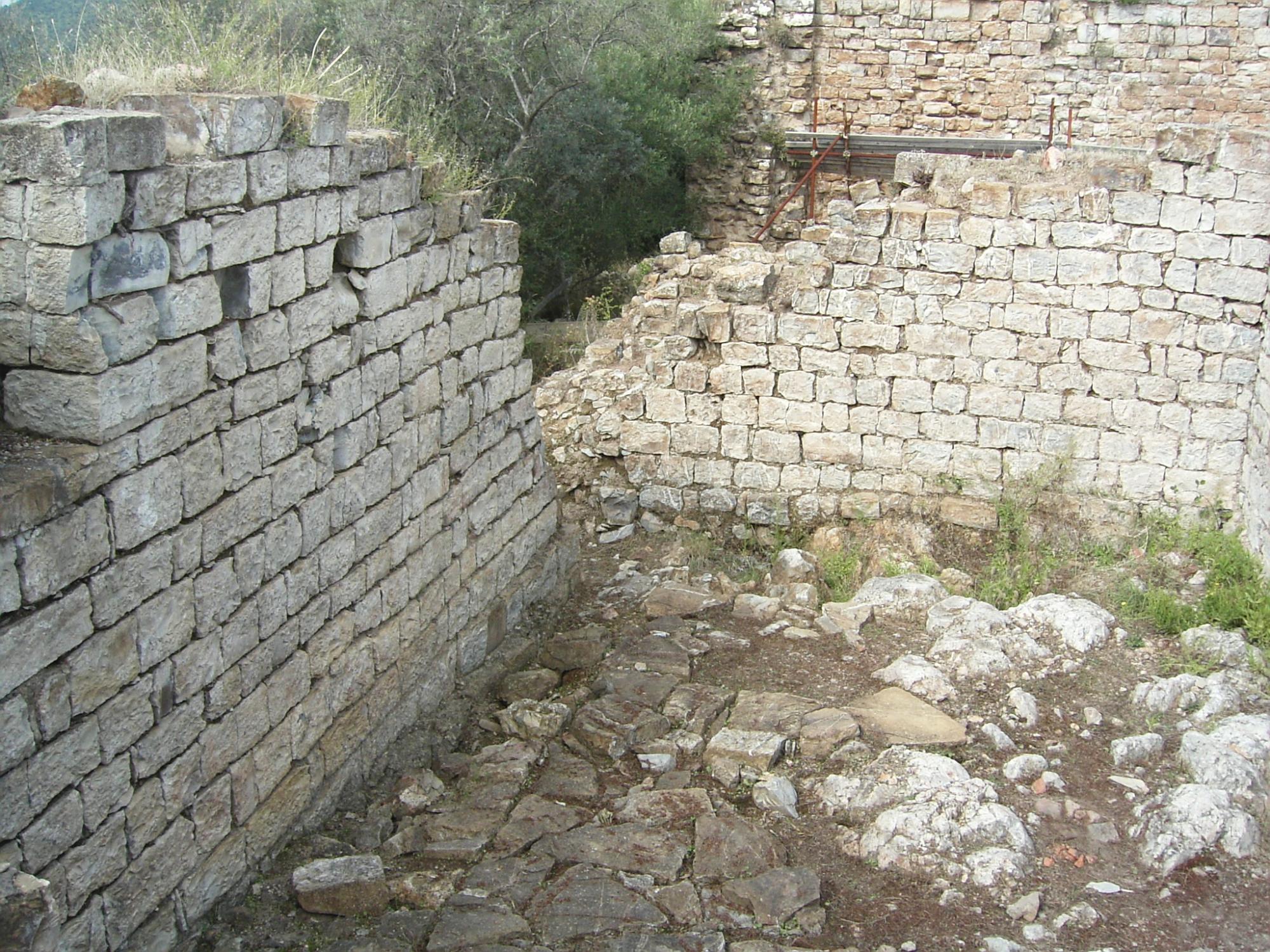

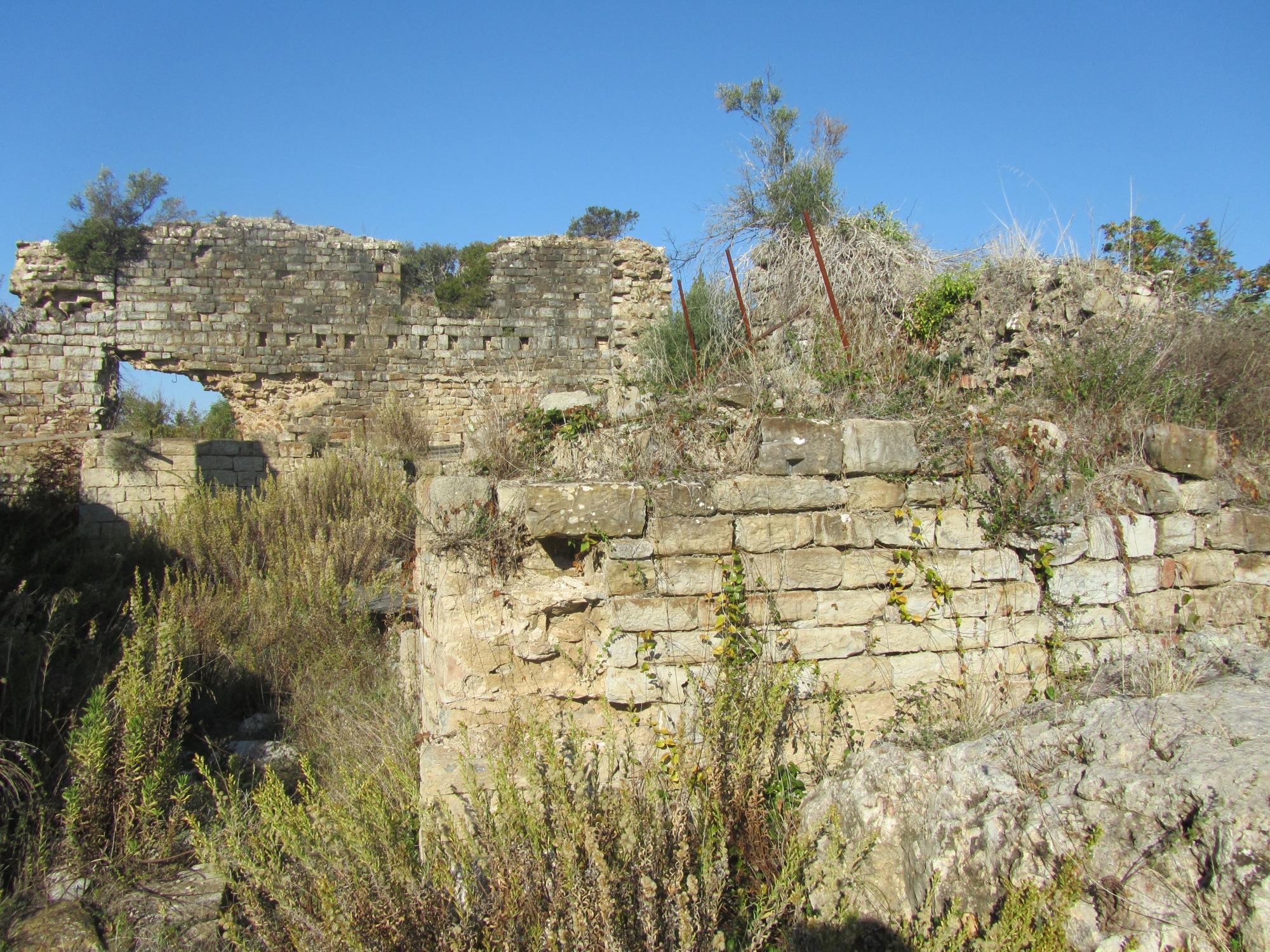






















How to reach
The few remains of the Castel Pietra can be reached from Florence by the Florence-Siena Superstrada and then from Siena by the SS223 Siena-Grosseto Superstrada exiting at Civitella Marittima. Take the direction for Roccastrada and then for Ribolla. After Ribolla, follow the signs for Gavorrano and after about eight kilometers, right after the crossroad on the right for Massa Marittima, you will see on the left, an unpaved road. Go on for about 2.2 km until you come to a crossroad on the right, marked by a large stone Continue up this road, always staying to the right and passing a farm. After about 100 meters, leave your car and continue on foot up a trail in the woods. The trail is not marked. The property is private, and the owners have no interest in making it visitable.
Update: At the height of the large stone now (October 2024) there is an iron gate and the castle is difficult to reach, if not impossible.
History
At the foot of the Serre hills, on the northern side of the Poggio al Quercione hill, you will find the ruins of the Castello di Pietra, overlooking the valley of the Bruna river and its peaceful countryside. Written accounts don’t mention this castle for the whole period of the upper middle ages, even if its conformation, favorable position, and easy access to the site make one think of the possibility of the existence of a settlement.
There are accounts of the castle from 1067, when it was involved in the pact between the Aldobrandeschi and the Senese for salt commerce. This great feudal family began building on the summit of the hill. A square tower and a small enclosure were built. This tower was later partially destroyed and turned into a cistern. Towards the end of the 12th century, the entire upper portion of the site, and possibly even the lower part, were enclosed by a defense wall with a circular tower on the north-west side of the hill. This construction also involved the older, first fortification that was then enlarged, creating a building on the southeast corner of the site.
The consignment of the property from the Aldobrandeschi family to their vassals, the Pannocchieschi, in the middle of the 13th century had architectural as well as political repercussions because of their contrasts with the comune of Siena. Much of the keep was restructured using mainly bricks, and some portions are still visible today.
During the first decades of the 14th century, both the comunes of Massa Marittima and Siena tried to include Castello di Pietra in their respective areas of rule, becoming more and more aggressive and eventually diminishing the power of the Pannocchieschi. Soon after, in the second half of the 14th century, the decline of Pietra began around the same time the Tolomei and the Malavolti families claimed it. The castle was already abandoned by 1413.
Today, the structure is completely in ruins, even if recent archeological excavations have brought to light large walls on different levels with traces of window openings and rooms. Among the remains, you can still make out today the large, square, chalky rocks, a tower on the east side, almost directly on a precipice, and the surrounding walls to the west and to the south.
In this fascinating place, Nello d’Inghiramo of the Pannocchieschi, an important political figure, had his castle. He was the chief magistrate of Volterra in 1277 and of Lucca in 1313, Captain of the Guelphs in Tuscany in 1284, and Captain of the People of Modena in 1310. He was famous for his violent temper, and it was here, maybe around 1300, that he ordered the execution of his wife, Pia dei Tolomei, in order to marry Margherita Aldobrandeschi, with whom he was having an affair. Perhaps for this reason, the supreme poet Dante describes her pain in the Fifth Canto of Purgatory of the Divine Comedy, the celebrated verse
"Remember me , I am the Pia; Siena made me, Maremma unmade me.
This in his inmost heart well knows he with whose fair jewel I was ringed and wed."
On the slopes of the hill, you will find the “Riparo Cavanna” a small enclosure caused by the landslide of the main part of the hill. Here, the Naturalistic Society of Maremma brought to light numerous artifacts from the middle Paleolithic era, an important testimony used to reconstruct the ancient history of man in this territory.
The reoccurrence of the tragic death of Pia de Tolemei in the Castello di Pietra is celebrated every year the first Saturday of August at Gavorrano with a reenactment in costume called the “Leap of the Countess”, with parades, exhibitions of flag throwers, a horse race between the two neighborhoods of the “Tolomei” and the “Pannocchieschi”, all leading up to the evening event of the “Leap of the Countess”.
More info & notes
Aerial photos by Opaxir: https://www.flickr.com/photos/opaxir/